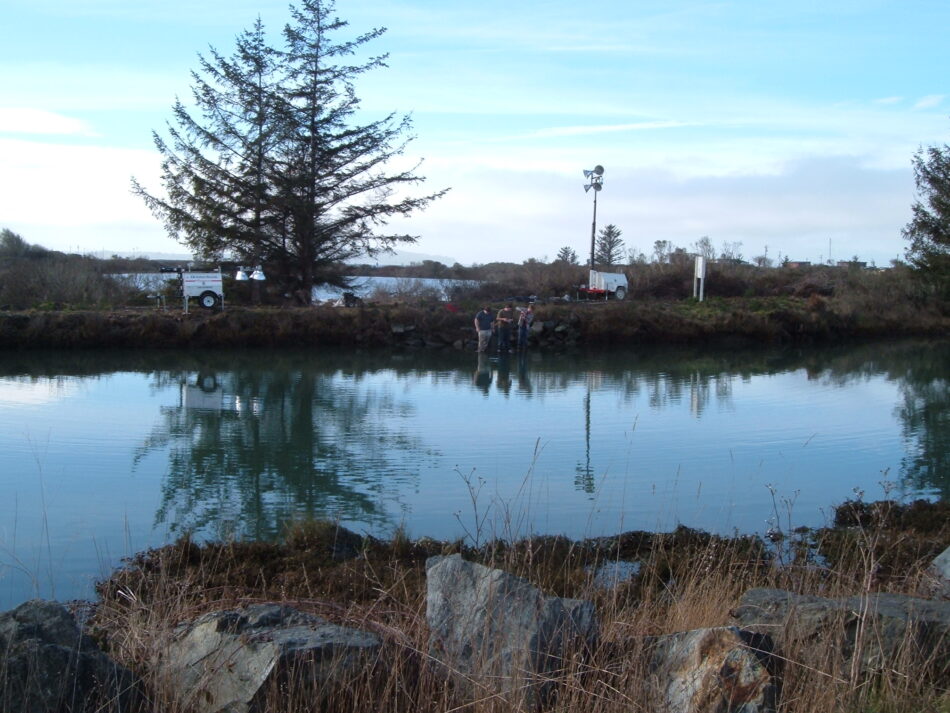
1.) A tidally influenced drainage pipe in King Salmon California, needed to be blocked off to be cleaned prior to the installation of a new pipe that connected to the headwall of the older pipe, just below the fishermen.

2.) A steel plate was placed in front of the opening of the pipe and a double closed end (DCE) AquaDam was unrolled up to the plate to hold it in place. The fill-tubes for a DCE AquaDam are on top of the body of the unit allow the unit to be free standing and not require a starting bank. The DCE AquaDam did not reach high enough to hold the top of the plate in place, so a smaller, single closed end (SCE) AquaDam (white material) was unrolled on top of the DCE AquaDam and into the top of the steel plate.
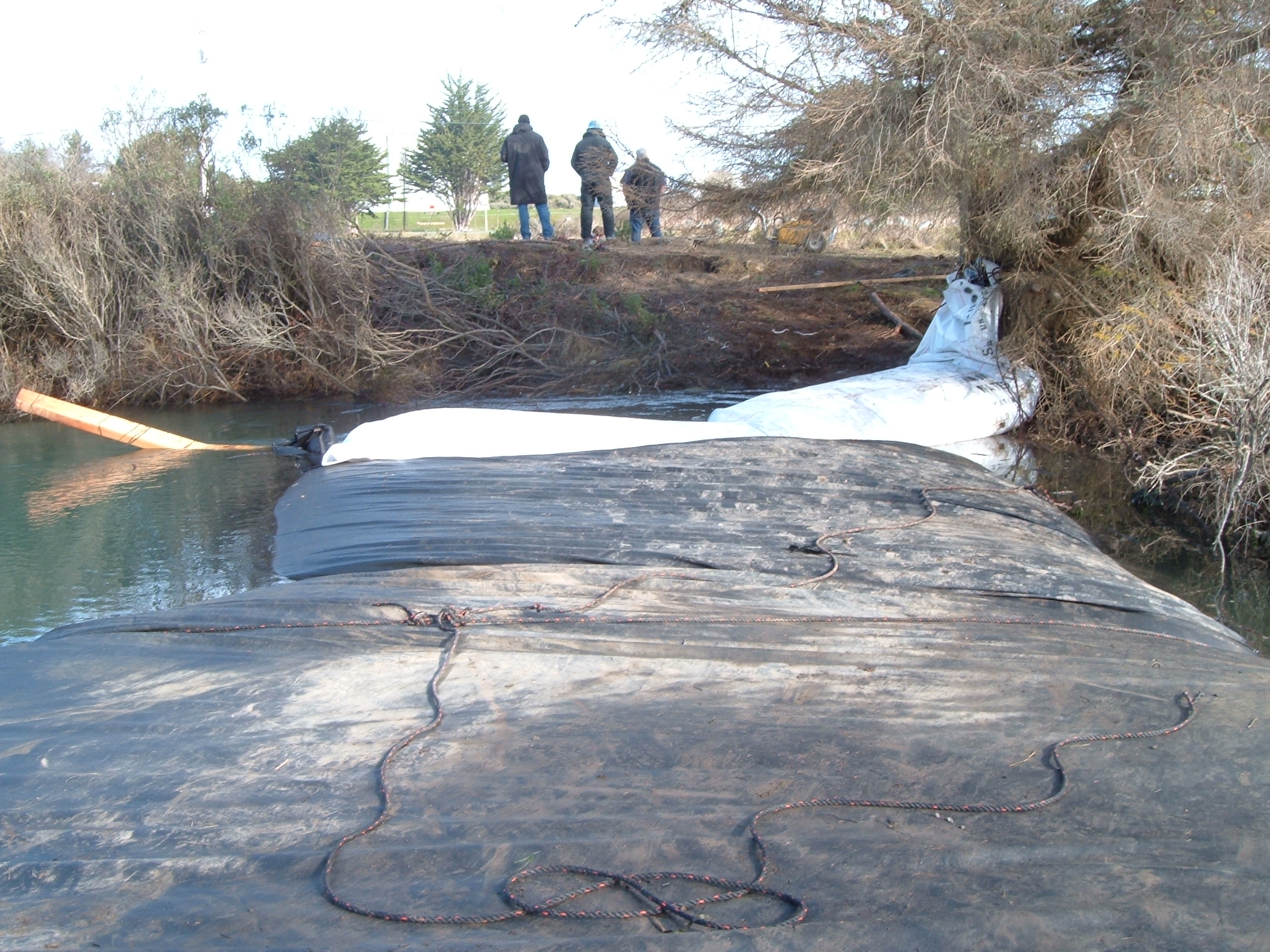
3.) A SCE AquaDam needs a starting bank to keep its open end and fill-tubes elevated. The tree at the top right of this photo was the smaller SCE AquaDam’s starting bank. The open end and fill-tubes of a SCE AquaDam must be elevated higher than the full height of dam along its given path. An AquaDam will only reach its full height at the lowest elevation along its given path.
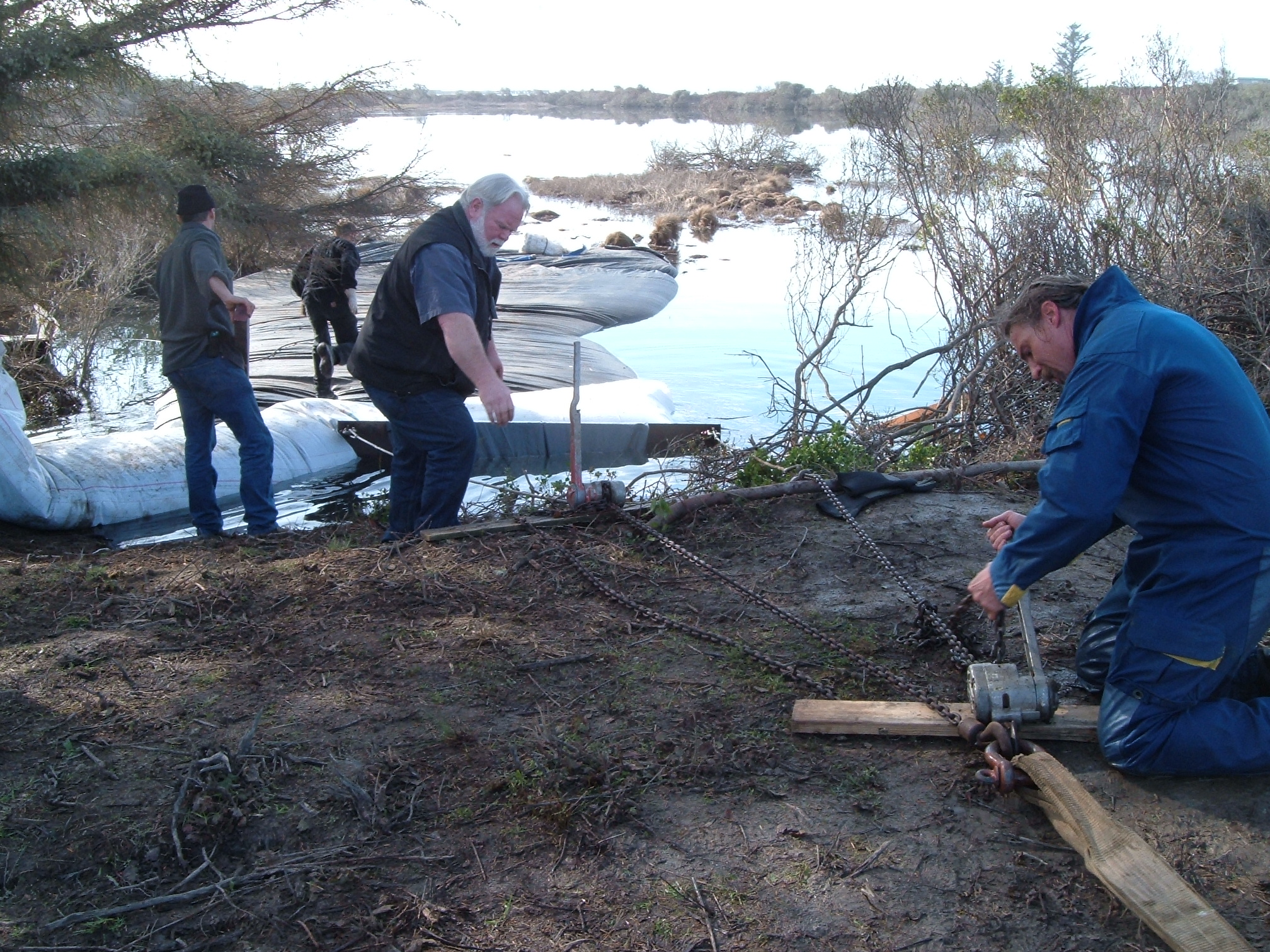
4.) The SCE AquaDam was not positioned well enough to push the plate up to the pipe opening, so workers used a winch to help pull.
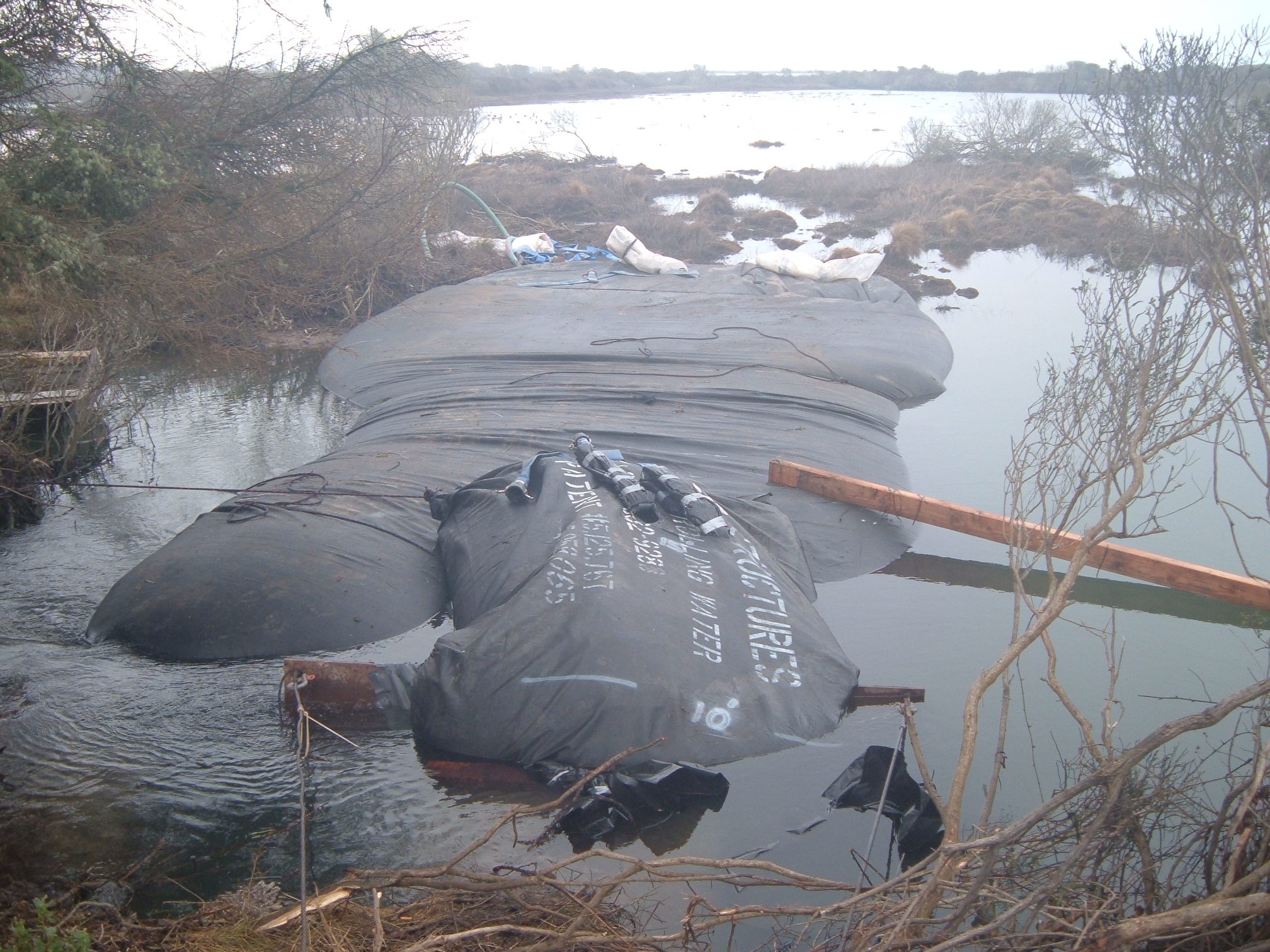
5.) The SCE AquaDam was removed and another DCE AquaDam was installed, but in a different direction to push and hold the steel plate.
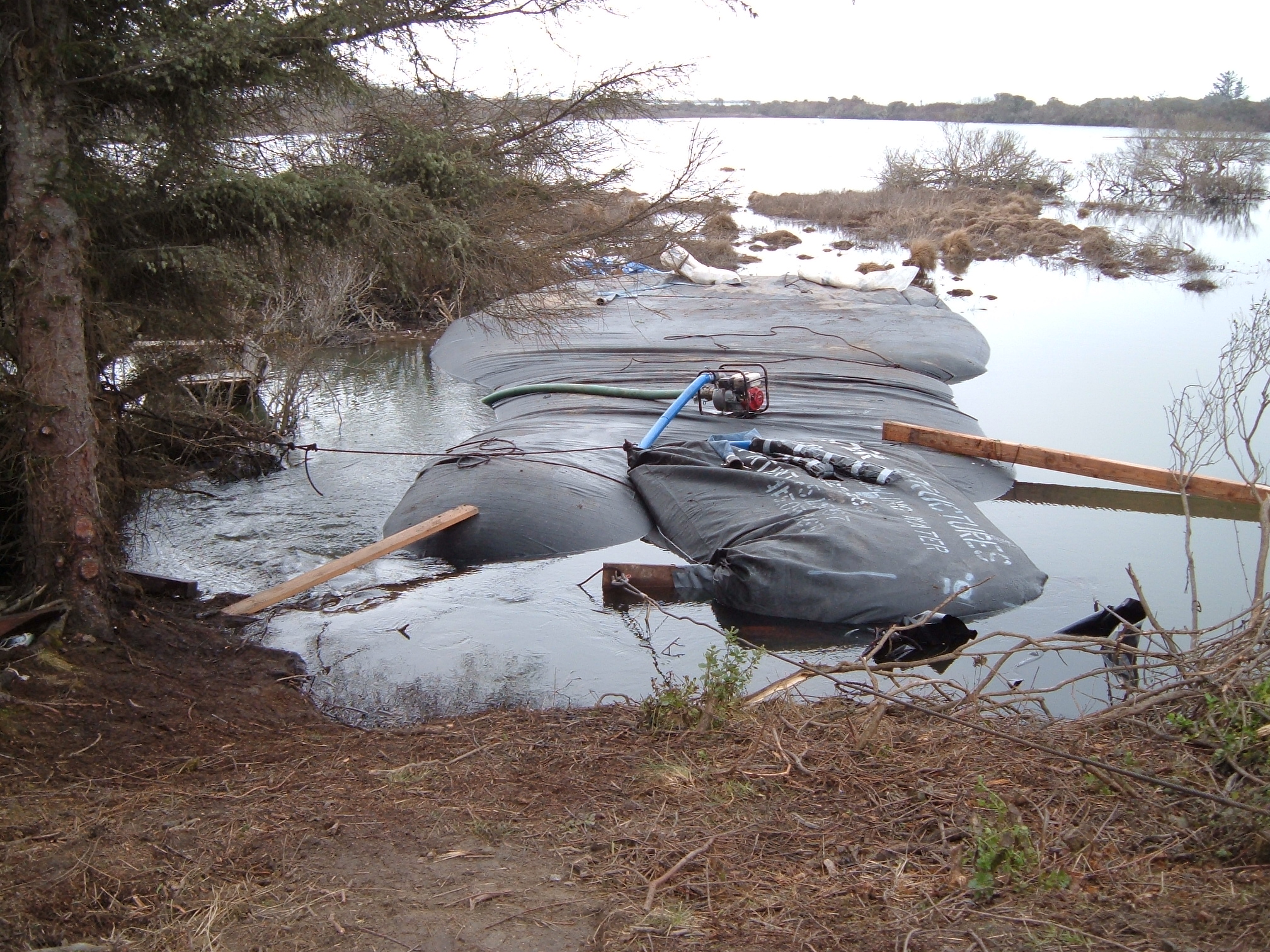
6.) A pump was placed on top of the first DCE AquaDam to help fill the second one. A full AquaDam also provides a good working surface when needed.
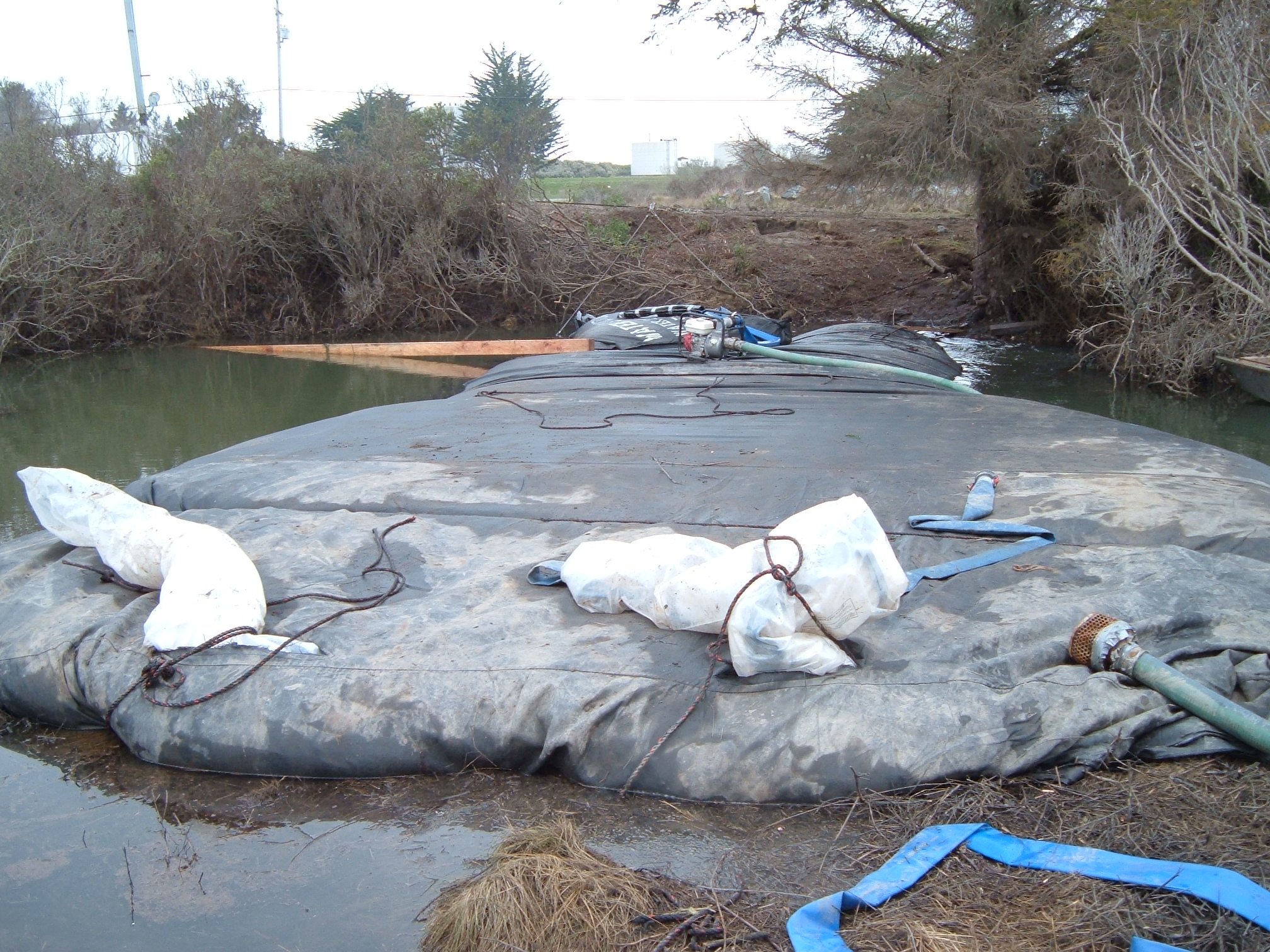
7.) Here we can see the fill-tubes of the first DCE AquaDam. The bank where this dam was launched from has been overtaken by water from high tide. One of the reasons a DCE AquaDam was chosen for this project, was the absence of an elevated bank to launch from.
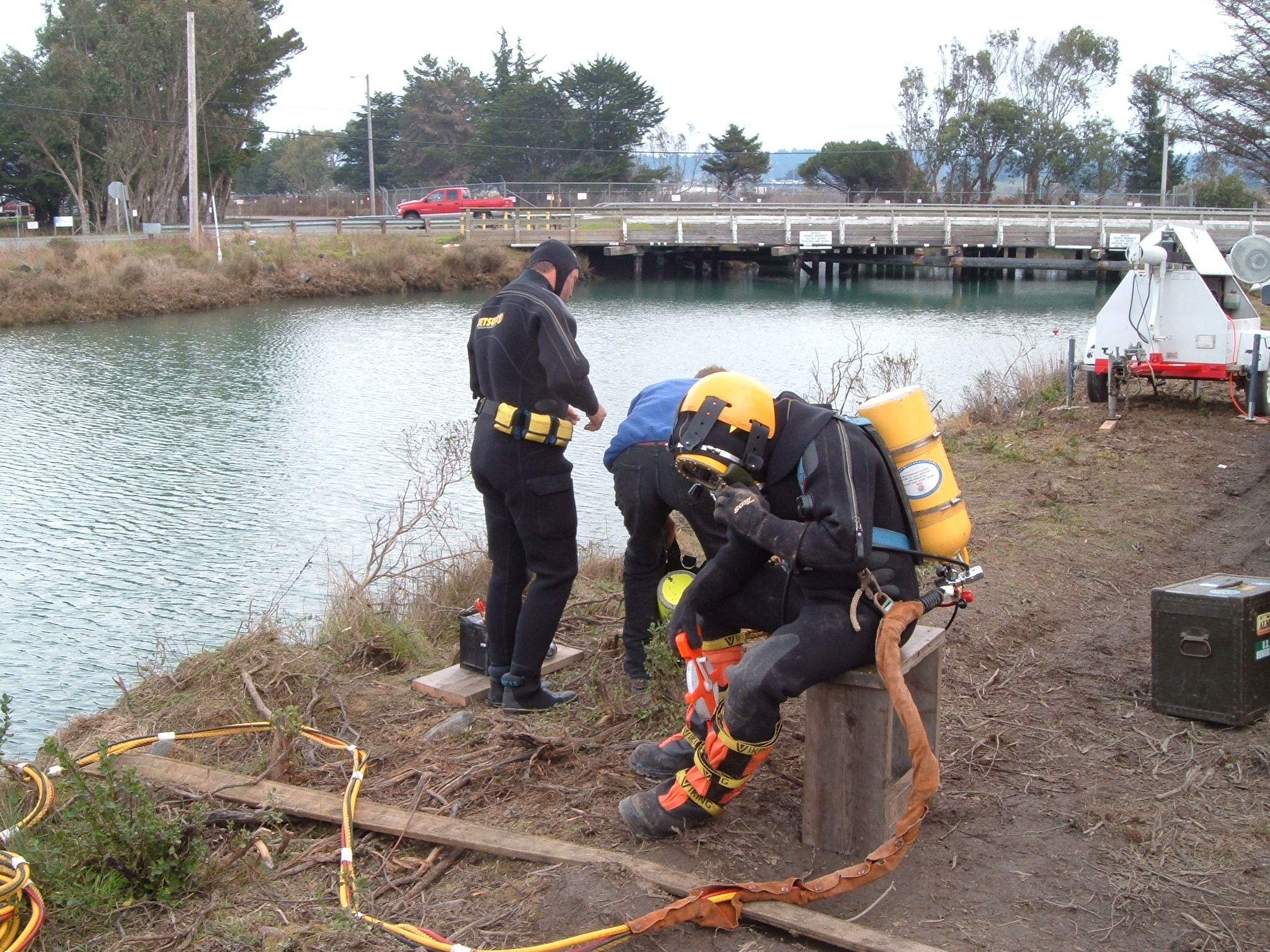
8.) Divers getting ready to swim inside the pipe to clean and remove debris. After the culvert has been cleaned the new pipe can be added.

9.) The first diver is in the water and making his way towards the headwall of the pipe.
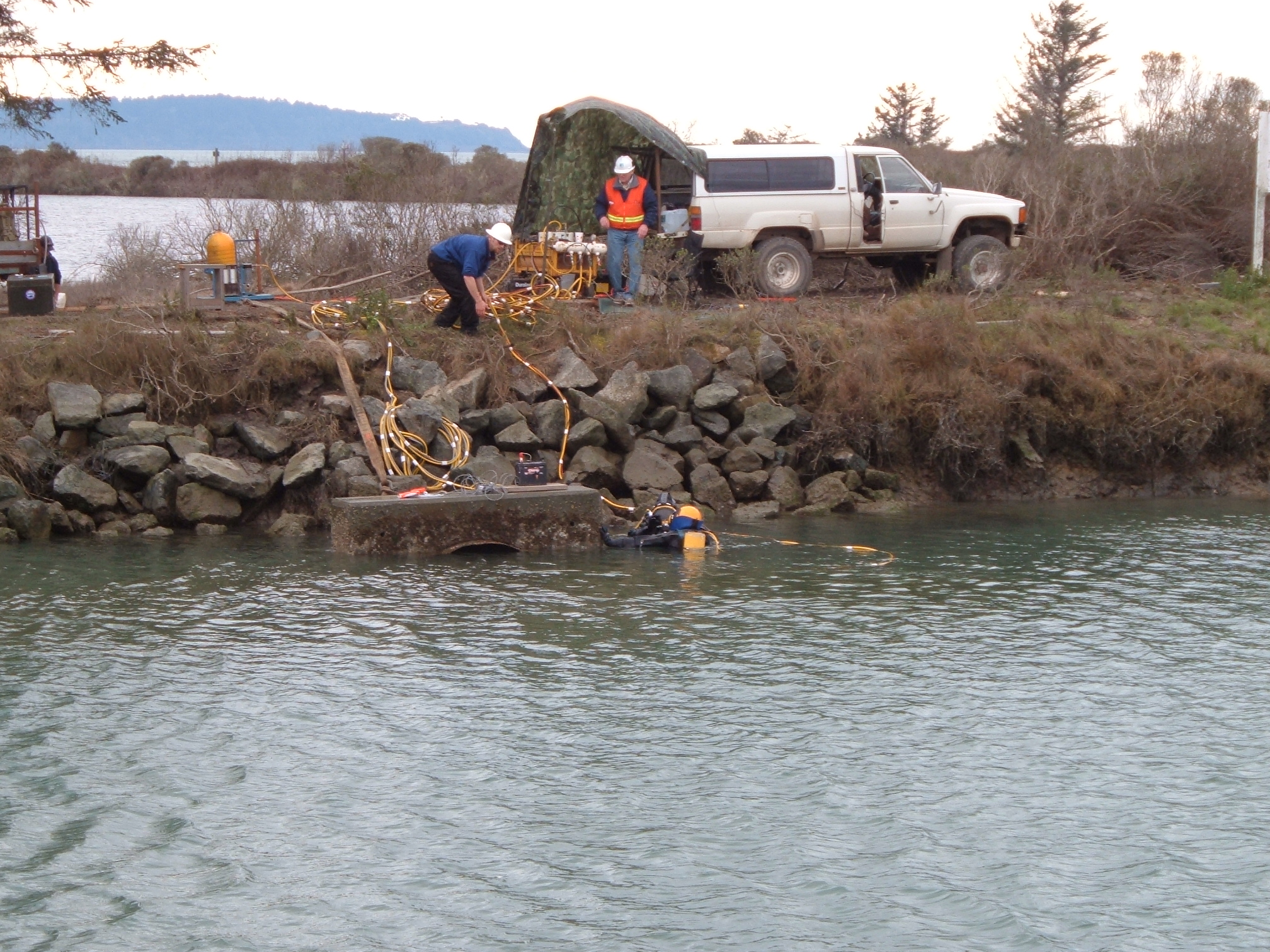
10.) Both divers are in the water and the cleaning can begin.

11.) Now that the pipe has been cleaned the AquaDams can be removed. The smaller DCE AquaDam has had its fill-tubes pulled out of a closed end and a suction hose was placed into one of the fill-tubes to remove the water that was inside. The water is so deep in this photo that the steel plate is underwater.
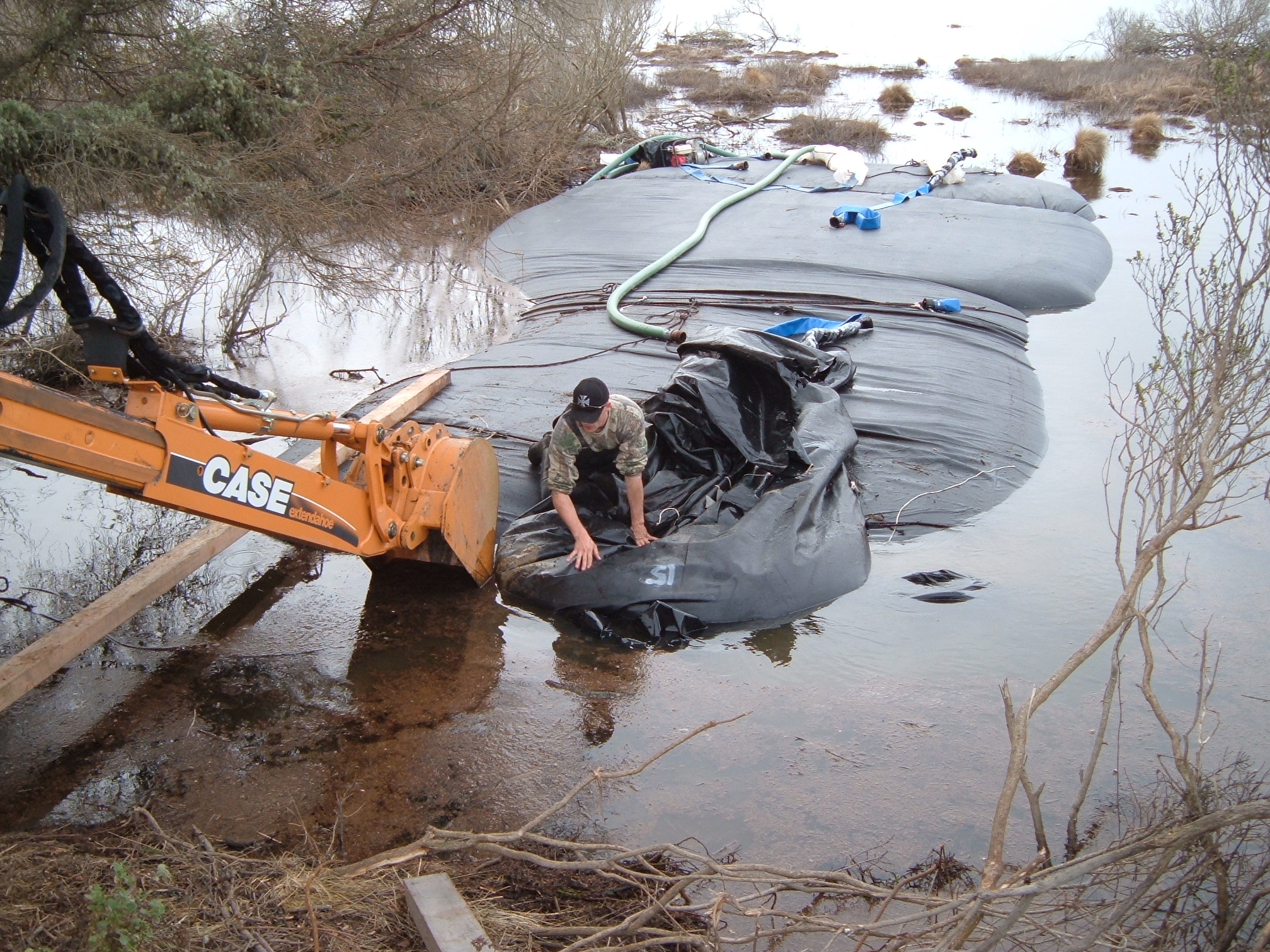
12.) Workers remove the smaller DCE AquaDam.
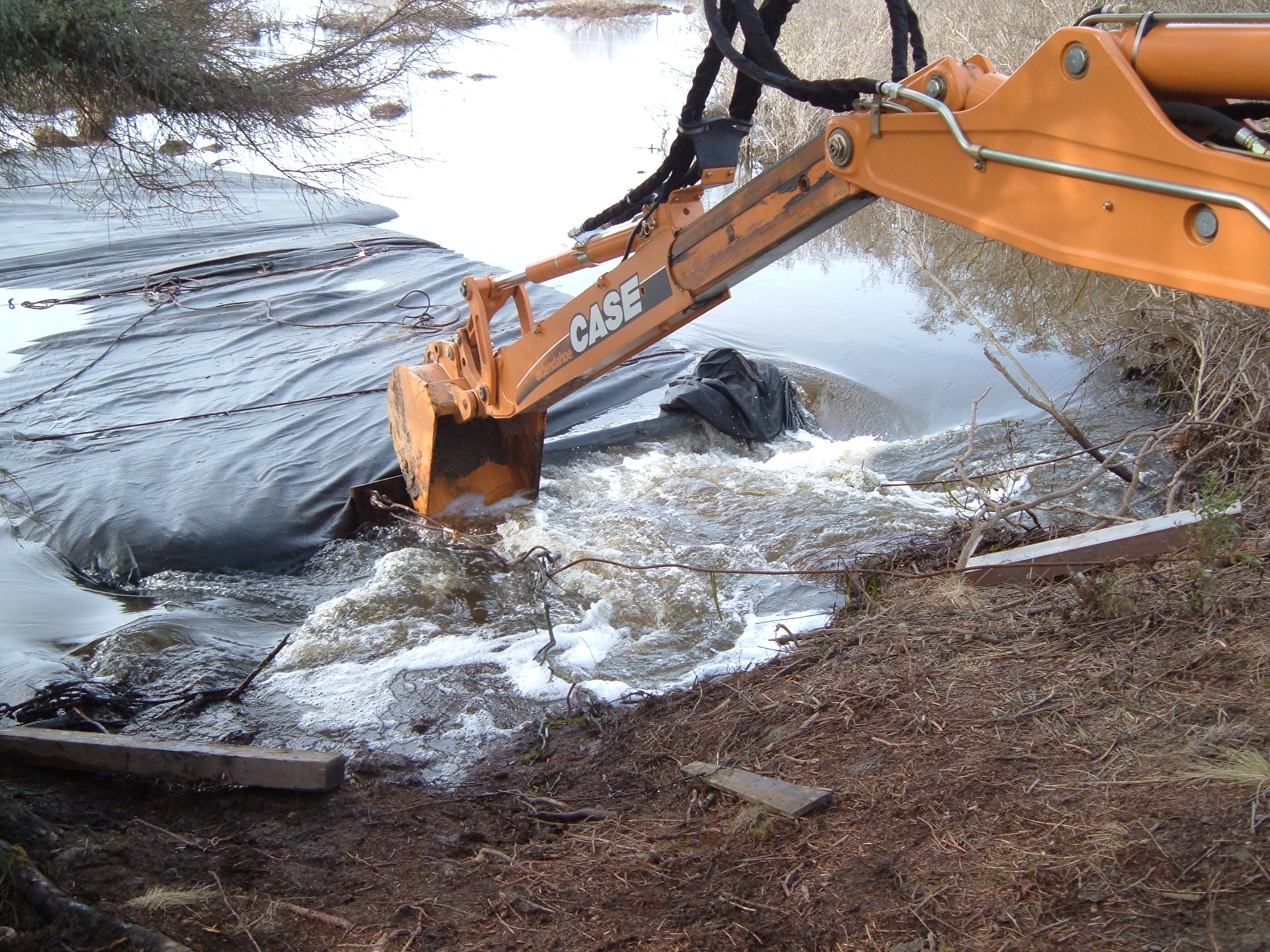
13.) Workers use an excavator to push the plate off the opening of the pipe, so that water may pass through again.
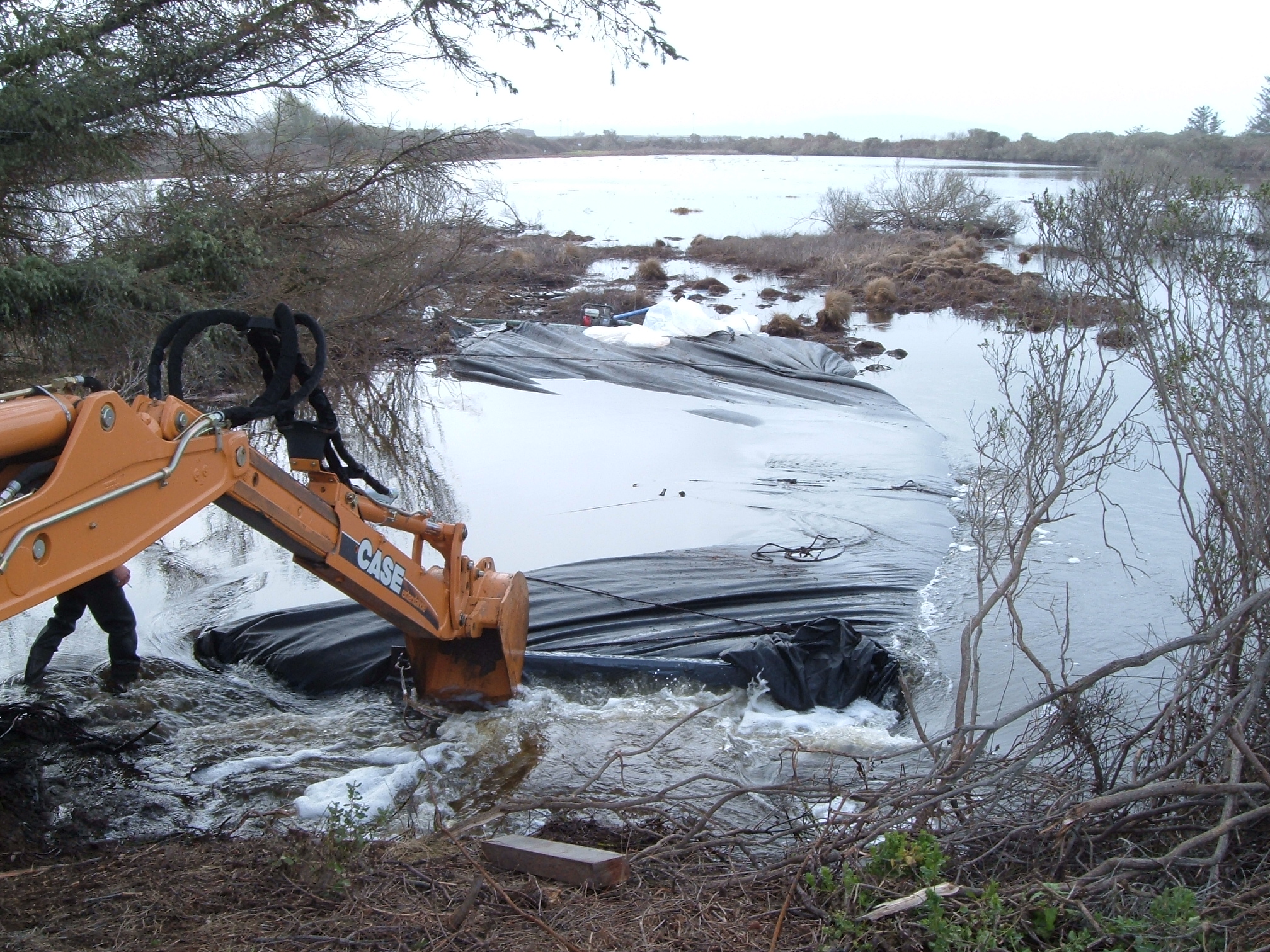
14.) The first DCE AquaDam is being drained of the water inside of it. Notice that the surrounding water is above most of the middle of the dam. Workers have cut the seam at the closed end closest to the fill-tubes and pulled the fill-tubes out through to help drain the water inside.
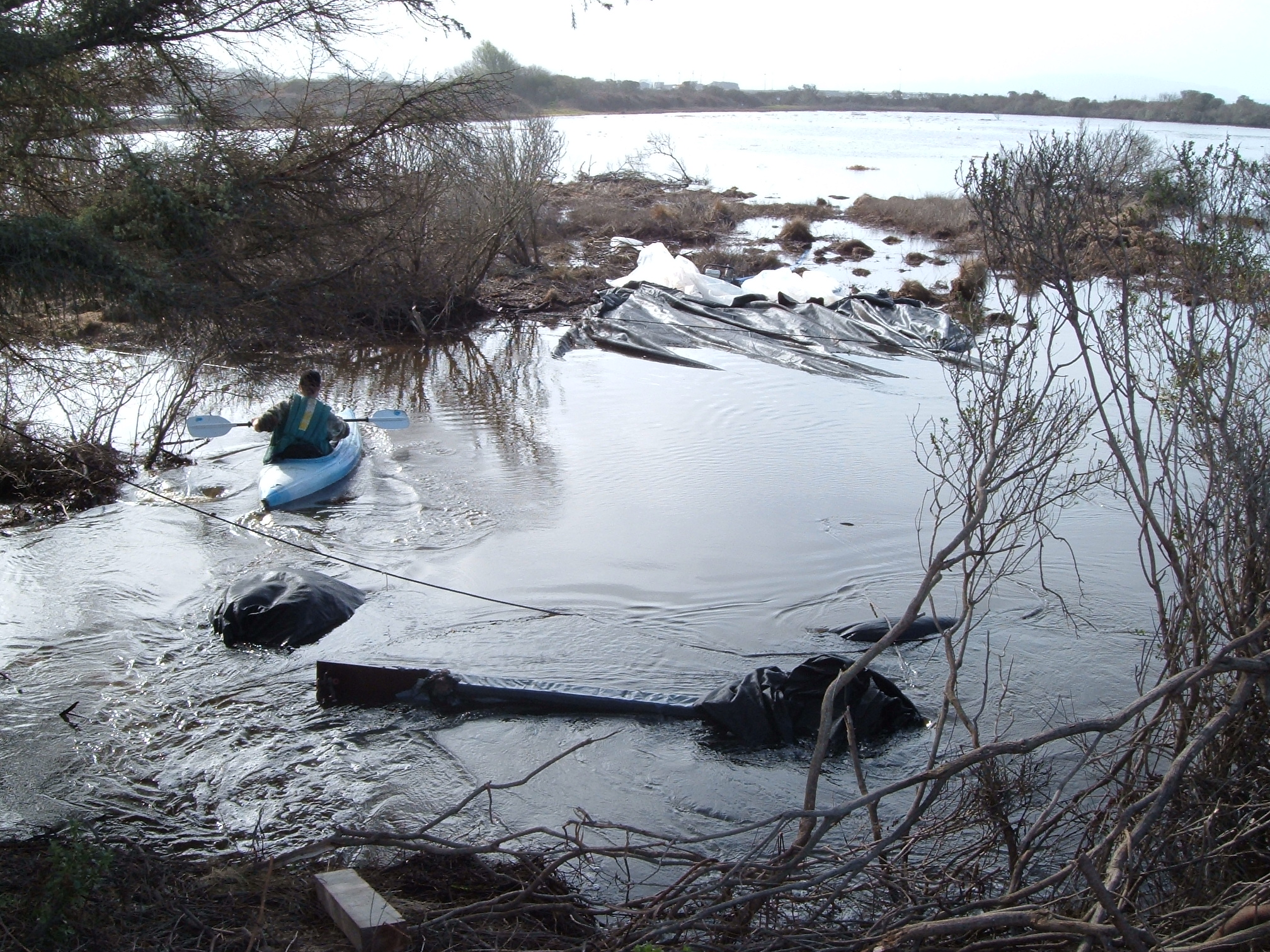
15.) The DCE AquaDam no longer has head above the surrounding water and all the water inside has almost been removed. Ropes were secured to the ends to prevent the tide from moving loose material as the AquaDam drains. AquaDams are made of light weight flexible materials and will float when empty in deep enough water.
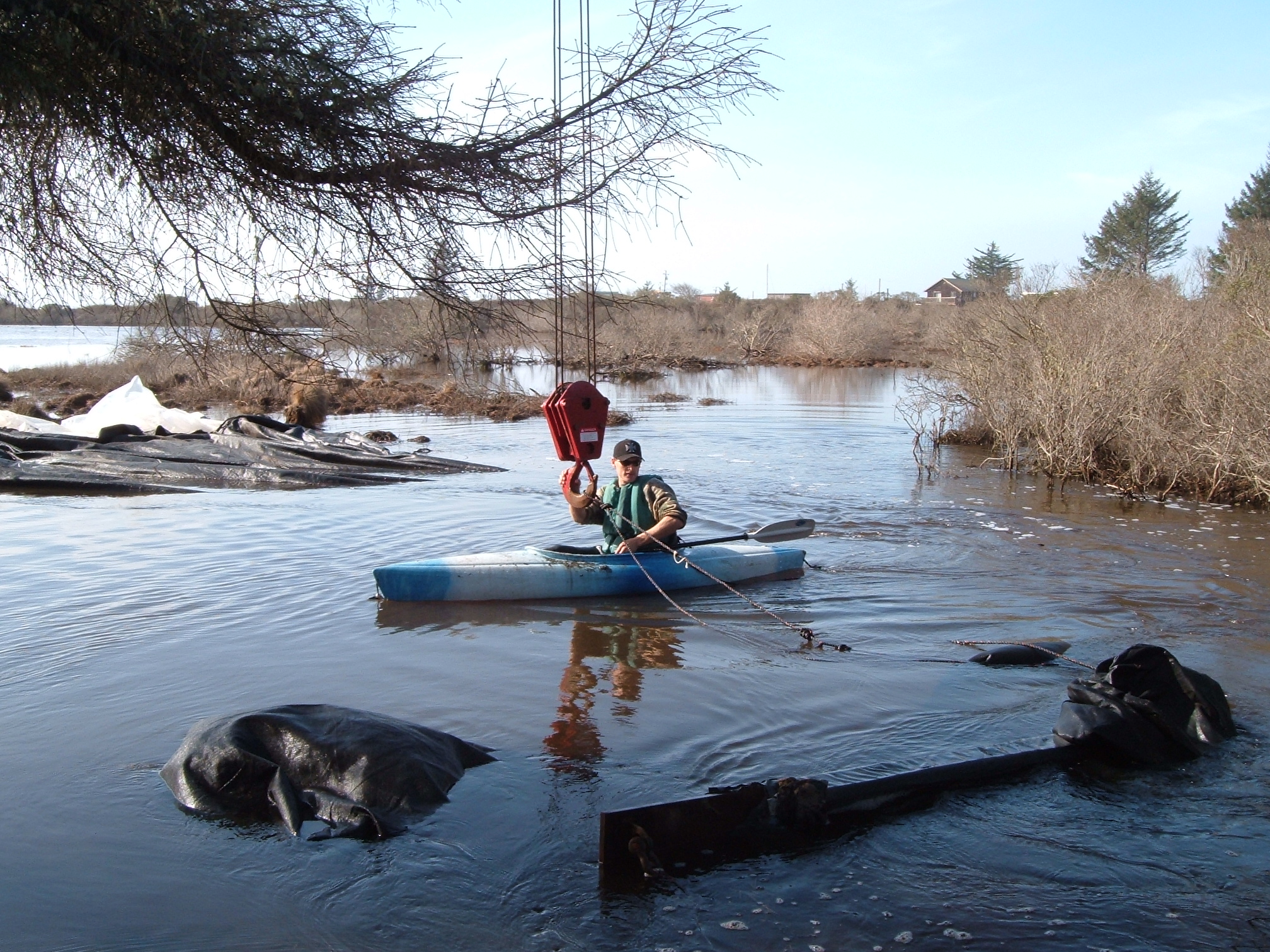
16.) A worker has tied a rope to the closed end of the dam and hooked the rope to a crane to lift.
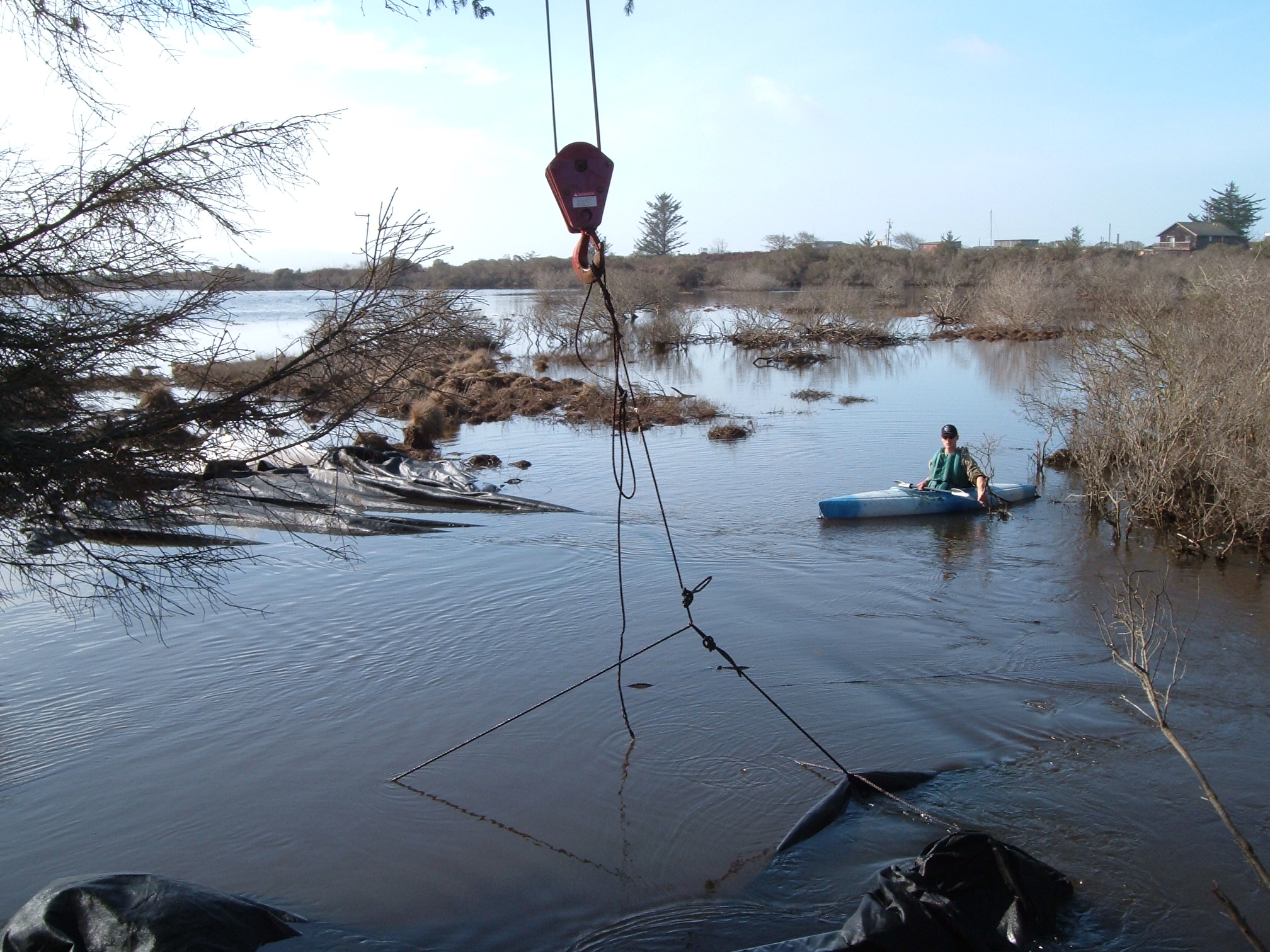
17.) The crane lifts the closed end of the AquaDam forcing the remaining water inside to fall out of the fill-tubes that have been opened.
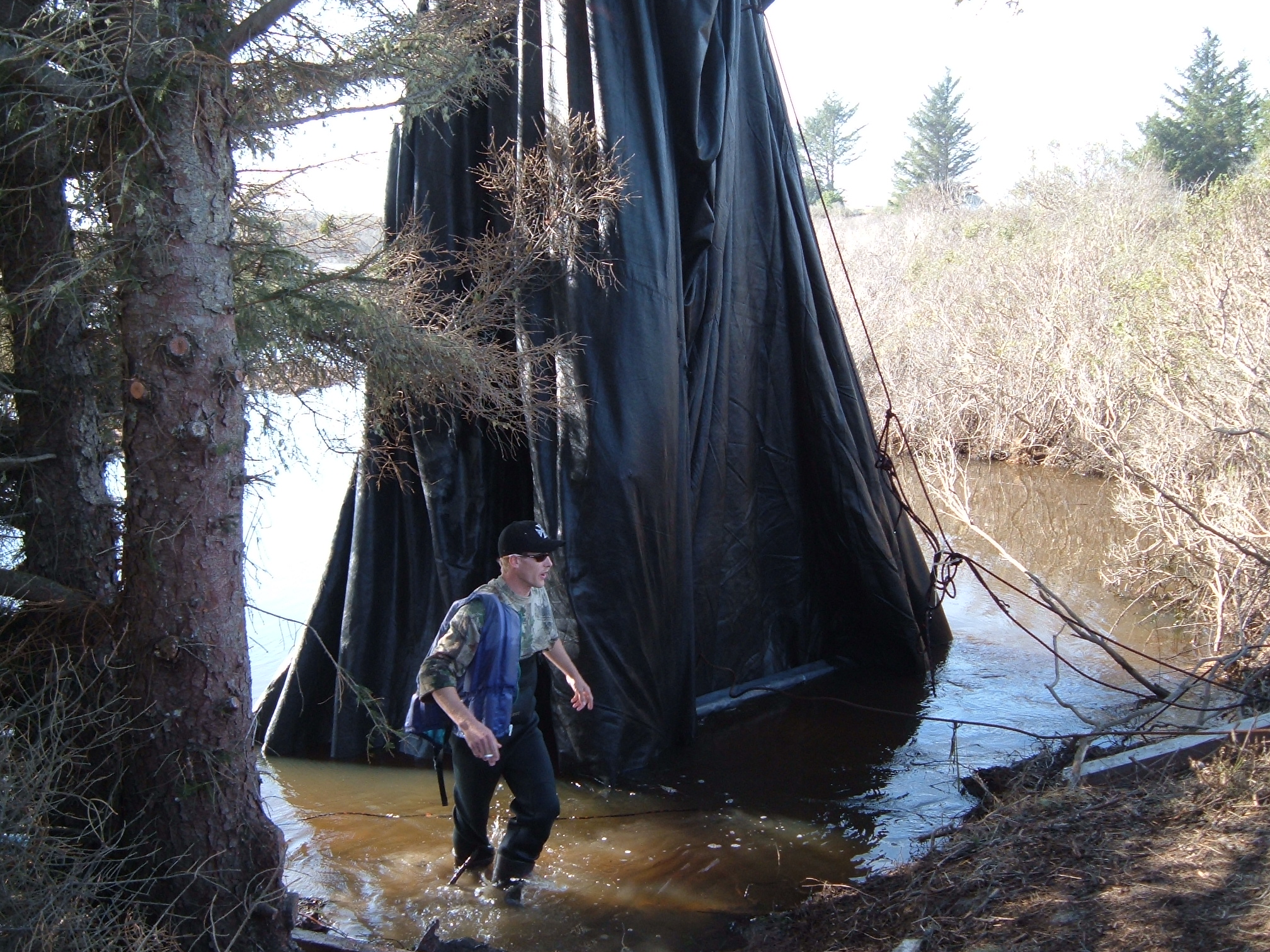
18.) The lifting process takes time, because the water needs to drain out of the material as it is lifted.
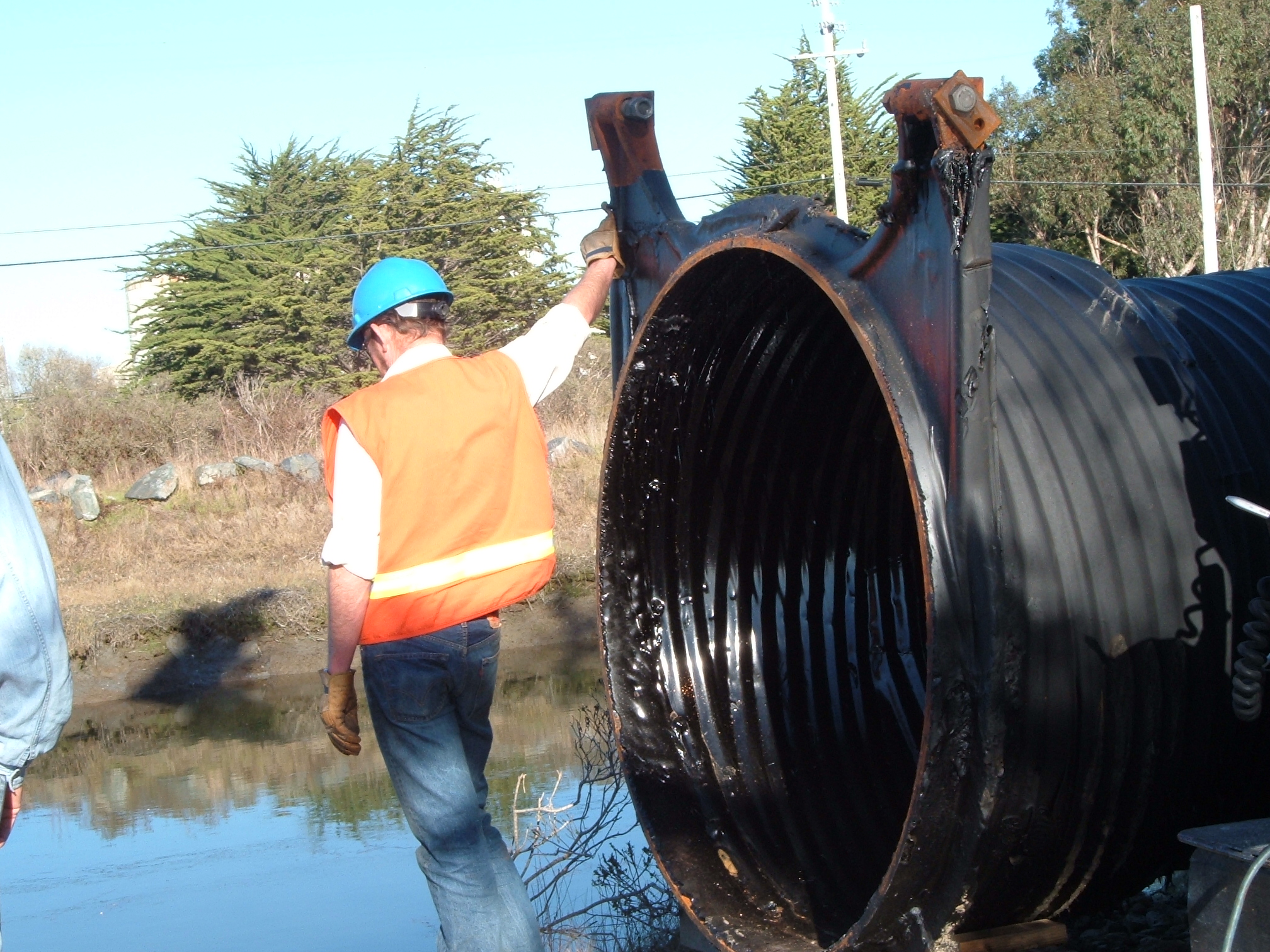
19.) Workers prepare the new pipe that will be added to the headwall of the existing pipe.
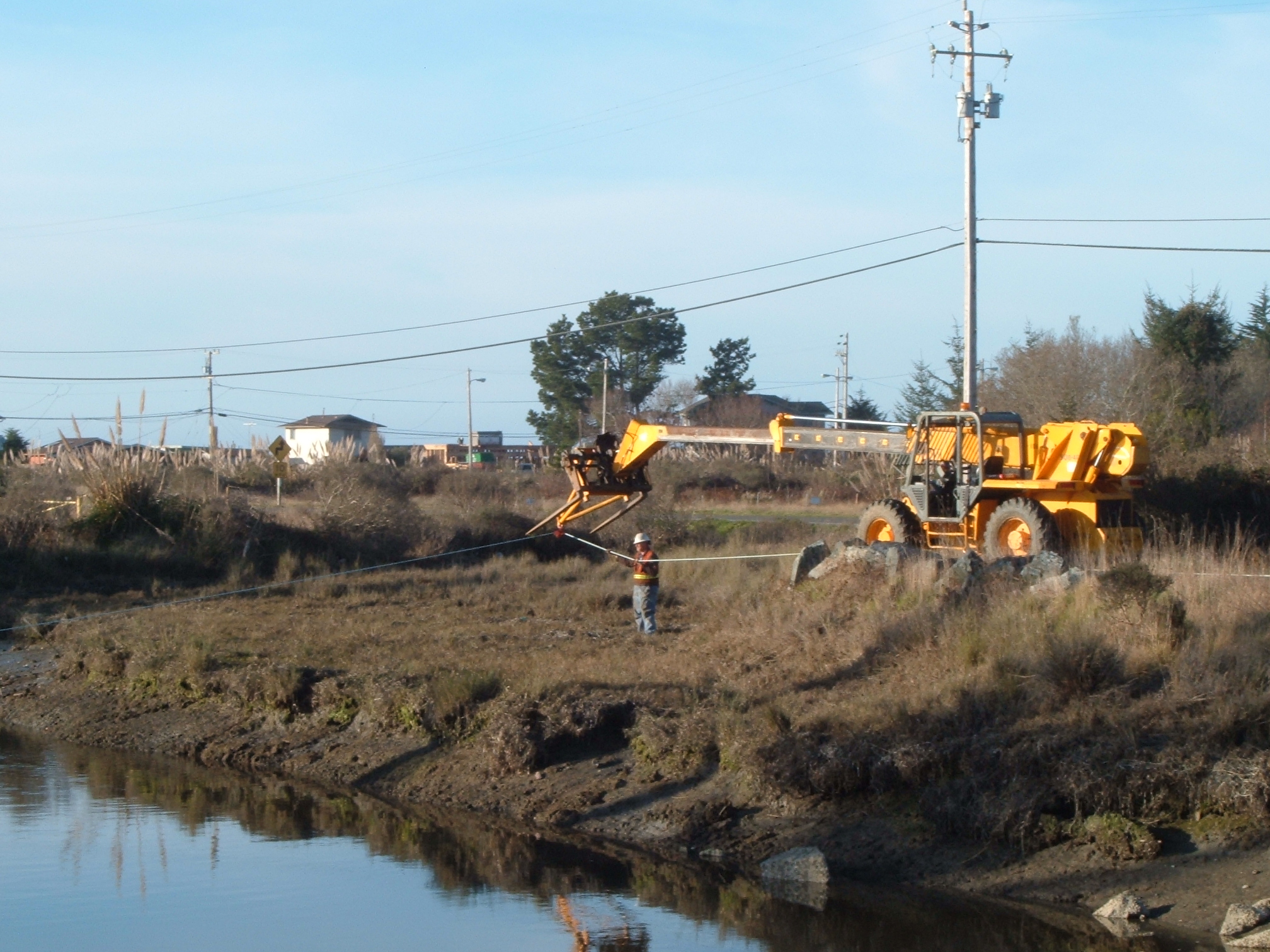
20.) Workers are installing the new pipe.
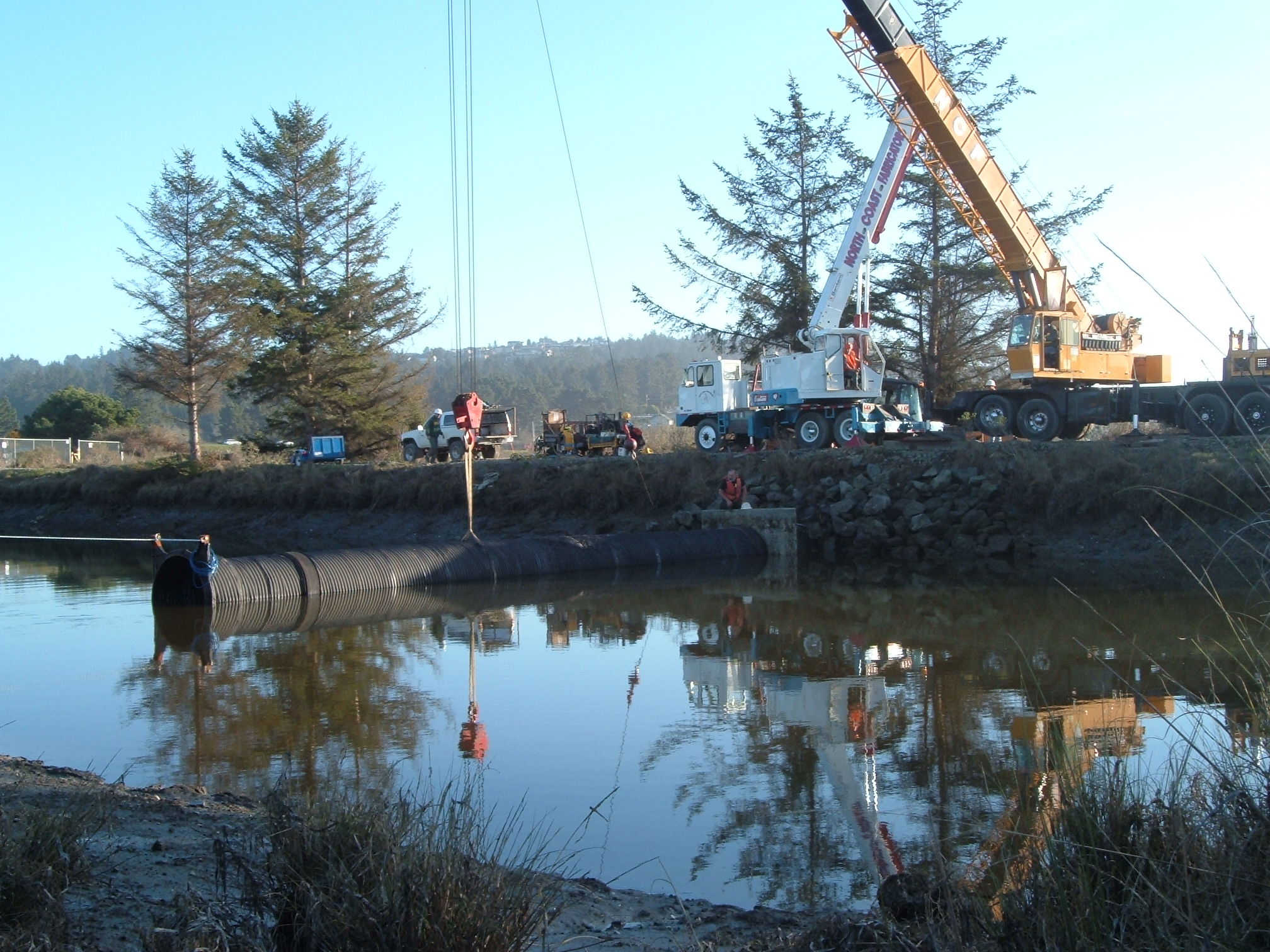
21.) The pipe is in position and workers will have to finish connection it to the headwall of the older one.

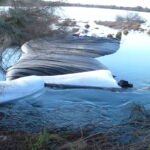
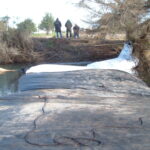
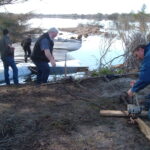
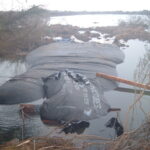
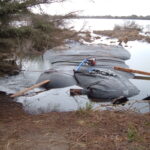
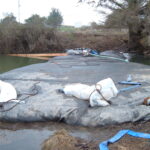
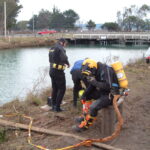
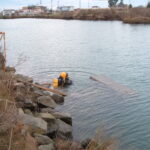
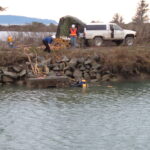
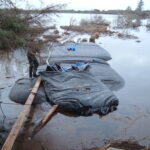

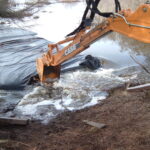
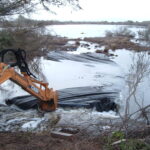
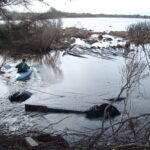
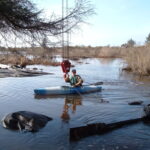
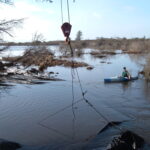
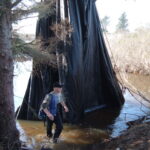
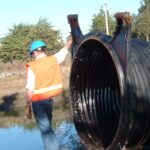
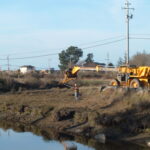
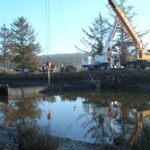
Double Closed End (DCE) AquaDams, Culvert Repair, Tidal Influence, King Salmon Slough
